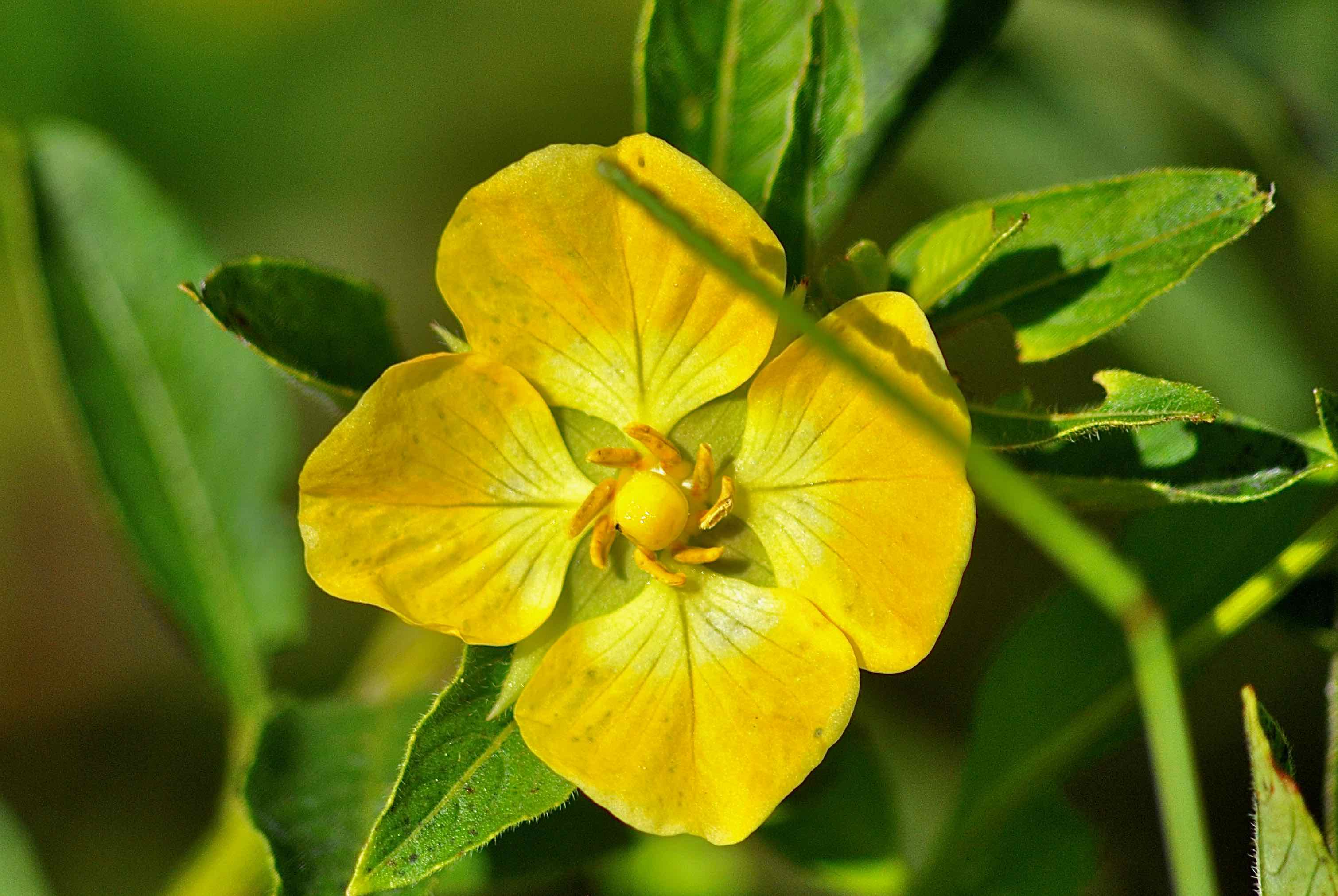
Peruvian primrose willow, photographed at Loxahatchee National Wildlife Refuge, Boynton Beach, Palm Beach County, in September 2013.
Without question, it's a pretty plant, with its bright yellow four-petal flower and long, lance-like leaves. It's also an invasive one.
Peruvian primrose-willow, Ludwigia peruviana, came to this country as an ornamental, but it has escaped cultivation and established itself in the wilds of Florida, Texas, Alabama, Georgia, Misissippi and Puerto Rico. Some argued for a time that it was native to the state, but the Florida Exotic Pest Plant Council concluded that it is foreign to our shores and declared it to be Category I invasive, doing serious damage to natural habitats.
This plant likes it wet. Peruvian primrose willow grow near water, along the edges of lakes, ponds and streams. Eventually, it will grow into the water, where it can create all sorts of problems. It can create dense colonies that block out native plants. When it hits the water, it can form floating islands that clog waterways and out compete aquatic plants. Those floating islands reduce the amount of sunlight that penetrates the water, killing submerged plants and reducing the amount of oxygen in the water, which can kill aquatic animals, including fish. It can increase sediments in the water, again reducing oxygen in the water. Attempts to remove the plant can end up helping spread it, because pieces of stem will root and create new plants.
Peruvian primrose willow is native to tropical parts of Central and South America, but because of its good looks, it's been introduced to warmer parts of the globe as an ornamental. It's established colonies in South Africa, India and Australia, where it's considered an invasive.
It's found in almost every Florida county, which, in an odd way brings us back to the argument that Peruvian primrose willow is a native. Or rather, evidence that it is not. The definition of a native plant is one that was here at the time the first Europeans stepped foot on our shores. An article on the subject in the Florida Native Plant Society's quarterly journal, The Palmetto, back in 2008, notes that naturalists in determining whether a plant is native to the state rely on the observations of early botanical explorers, particularly John and William Bartram and Andre Michaux in the 18th century. None reported finding the plant. In fact, it wasn't described in Florida until it was collected on the banks of the Miami River in 1878 and not again until 1893, when it was found in Lake County. Considering how massive Peruvian primrose willow colonies can be, it's almost inconceivable it wasn't seen before 1878.
Peruvian primrose willow is a perennial shrub, reaching as high as 10 feet. The leaves are alternate on the stem, simple, lance-shaped to oval, with a pointed apex, or end. They have prominent veining and can be two to six inches long. It has hairy, multi-branched stems. But its most distinguishing feature are the large, four-petal, bright yellow flower. Each petal is separated by a green sepal in the center.
Other common names: Peruvian seedbox, Peruvian primrosebush, primrose bush, primrose willow and water primrose. It is a member of Onagraceae, the primrose family.
Loxahatchee National Wildlife Refuge
Photo Gallery — Click on photo for larger image
U.S. Department of Agriculture Distribution Maps






